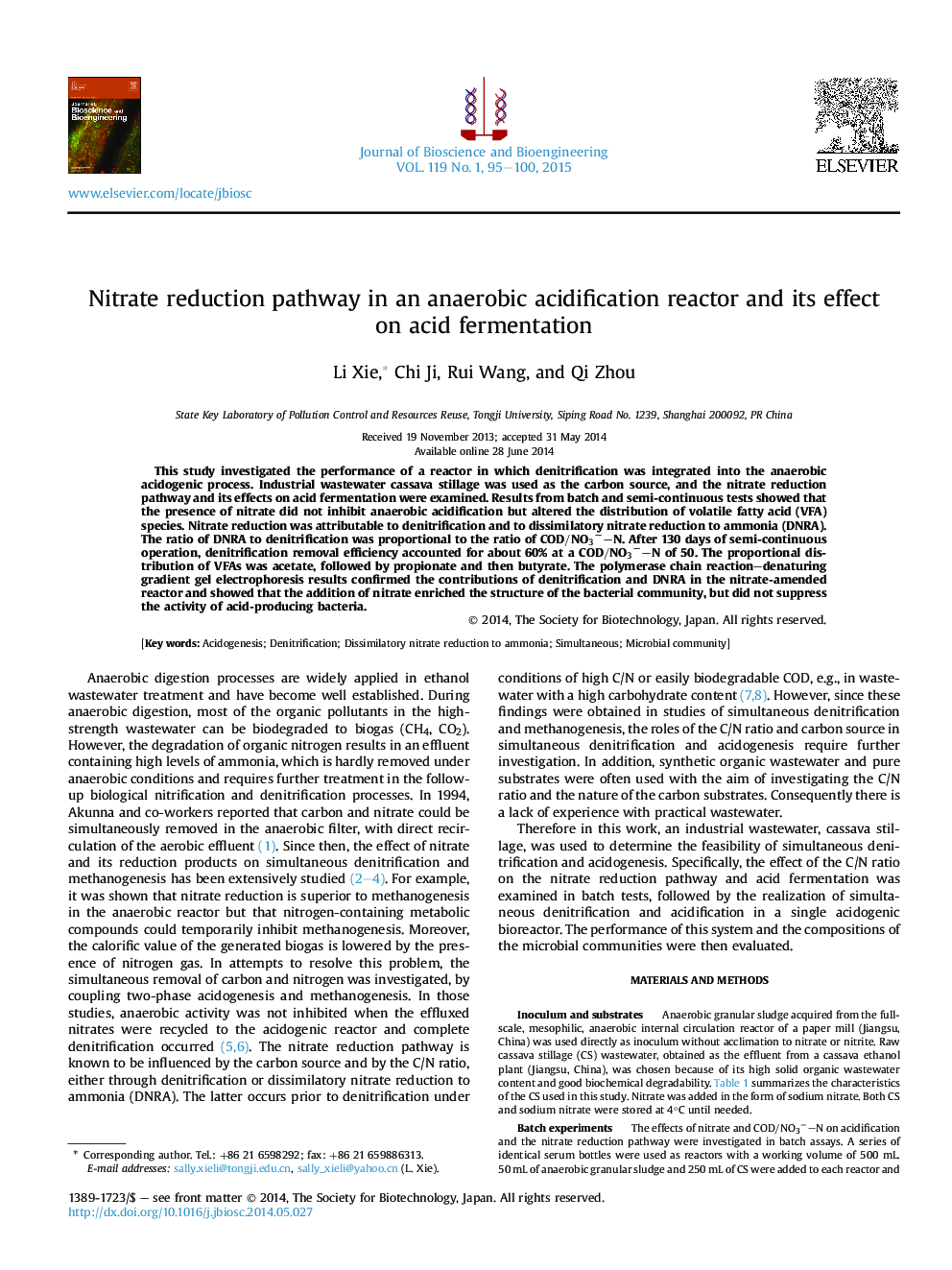| Article ID | Journal | Published Year | Pages | File Type |
|---|---|---|---|---|
| 20314 | Journal of Bioscience and Bioengineering | 2015 | 6 Pages |
This study investigated the performance of a reactor in which denitrification was integrated into the anaerobic acidogenic process. Industrial wastewater cassava stillage was used as the carbon source, and the nitrate reduction pathway and its effects on acid fermentation were examined. Results from batch and semi-continuous tests showed that the presence of nitrate did not inhibit anaerobic acidification but altered the distribution of volatile fatty acid (VFA) species. Nitrate reduction was attributable to denitrification and to dissimilatory nitrate reduction to ammonia (DNRA). The ratio of DNRA to denitrification was proportional to the ratio of COD/NO3−–NCOD/NO3−–N. After 130 days of semi-continuous operation, denitrification removal efficiency accounted for about 60% at a COD/NO3−–NCOD/NO3−–N of 50. The proportional distribution of VFAs was acetate, followed by propionate and then butyrate. The polymerase chain reaction–denaturing gradient gel electrophoresis results confirmed the contributions of denitrification and DNRA in the nitrate-amended reactor and showed that the addition of nitrate enriched the structure of the bacterial community, but did not suppress the activity of acid-producing bacteria.
